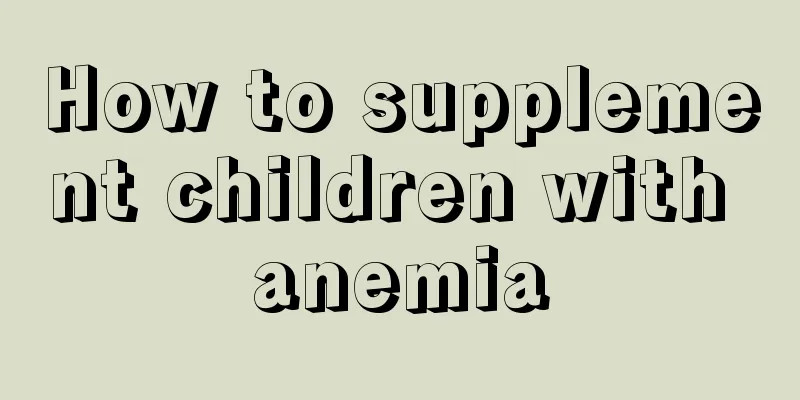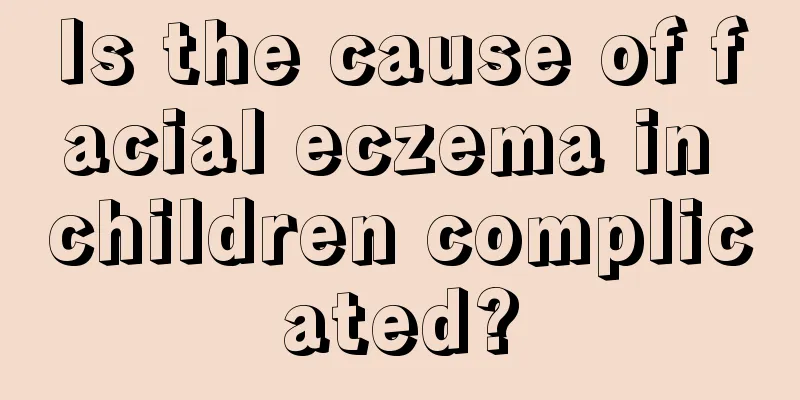How to supplement children with anemia

|
Anemia in children will affect the functions of various organs in the body. The child will feel listless, tired all over, and pale, especially when the child has iron deficiency anemia. Many primary diseases can cause anemia in children. For example, primary hemoglobin immaturity can further cause anemia in children. When children are anemic, their diet should be adjusted according to their age. At 4-6 months, babies can eat pureed food (mashed potatoes, apple puree, egg yolk puree) to increase taste stimulation. Since babies have no teeth, the food needs to be ground and added with porridge water to form a semi-liquid state before feeding; at 6-7 months, babies can eat starchy food (such as finger biscuits, dry bread, steamed bread slices, etc.). The baby will use saliva to soften the food before swallowing it; at 7-8 months, babies can eat semi-solid food such as pureed vegetable porridge, soft noodles, egg custard, minced meat porridge, etc., which are beneficial to tooth growth; at 8-12 months, the choices can be much richer, and wontons, tofu, steamed buns, flower rolls, tomatoes, rice, vegetables and meat can all be eaten. Vegetables: Leafy vegetables are high in iron, with rapeseed having the highest iron content, reaching 5.9 mg/100 g, followed by shepherd's purse and amaranth. Spinach, which is generally considered to have a higher iron content, actually only has 2.9 mg/100 g, less than half of rapeseed. Meat: Animal liver and blood contain the highest iron content, 10-25 mg/100 g, which is about 10 times that of livestock, poultry and fish (1-3 mg/100 g); the iron in eggs is mainly concentrated in the yolk, and the content is similar to that of livestock and poultry meat, while the iron content in milk is lower, only about 1/10 of that in livestock and poultry meat. Among various vegetable foods, the iron content is relatively high. In particular, non-heme iron is found in higher concentrations in plant foods. Of course, milk and eggs also contain appropriate amounts of non-heme iron. If the child has anemia due to non-hemoglobin reasons, the above foods can be eaten more. In addition, after the baby sucks breast milk, the iron absorption rate can be as high as 50%, so emphasizing breastfeeding is an important way to prevent anemia in children. |
<<: What is the cause of nutritional iron deficiency anemia in children?
>>: What are the symptoms of hypoglycemia in children?
Recommend
Treatment for children's cough and low-grade fever
Nowadays, the incidence of children's cough a...
What happened to the child's eyes?
As modern society continues to progress and peopl...
What should I do if my child has recurrent bronchial pneumonia?
Some people think that pneumonia only exists in m...
What's wrong with my child's red eyes?
When the eyes turn red, the first reaction is tha...
What should I do if my child has a fever?
If a child has a weak constitution, he or she wil...
What to do if your child has heart valve defect
Heart valvular disease refers to organic lesions ...
What is the situation of newborn baby shedding
In daily life, many new mothers will find that wh...
What are the causes of high blood sugar in newborns?
Newborns are the hope and future of their parents...
Causes of abdominal pain and vomiting in a 4-year-old child
Many children are prone to abdominal pain when th...
These folk remedies are effective in treating children's bedwetting
Bedwetting is a normal phenomenon. Many children ...
2-year-old baby has sore throat and fever
The baby is still very young and has very low imm...
Babies who are breastfeeding have a lot of stomach and smelly farts. Eat more of these vegetables to relieve the problem.
Because the baby does not come into contact with ...
Is it okay to give rectal medication when a child has a fever?
Fever is a common clinical problem. People of all...
Symptoms of acute gastroenteritis in children
Acute gastroenteritis in children is a relatively...
What are the methods for cutting baby eyelashes?
When a baby is just born, its eyelashes are not v...









